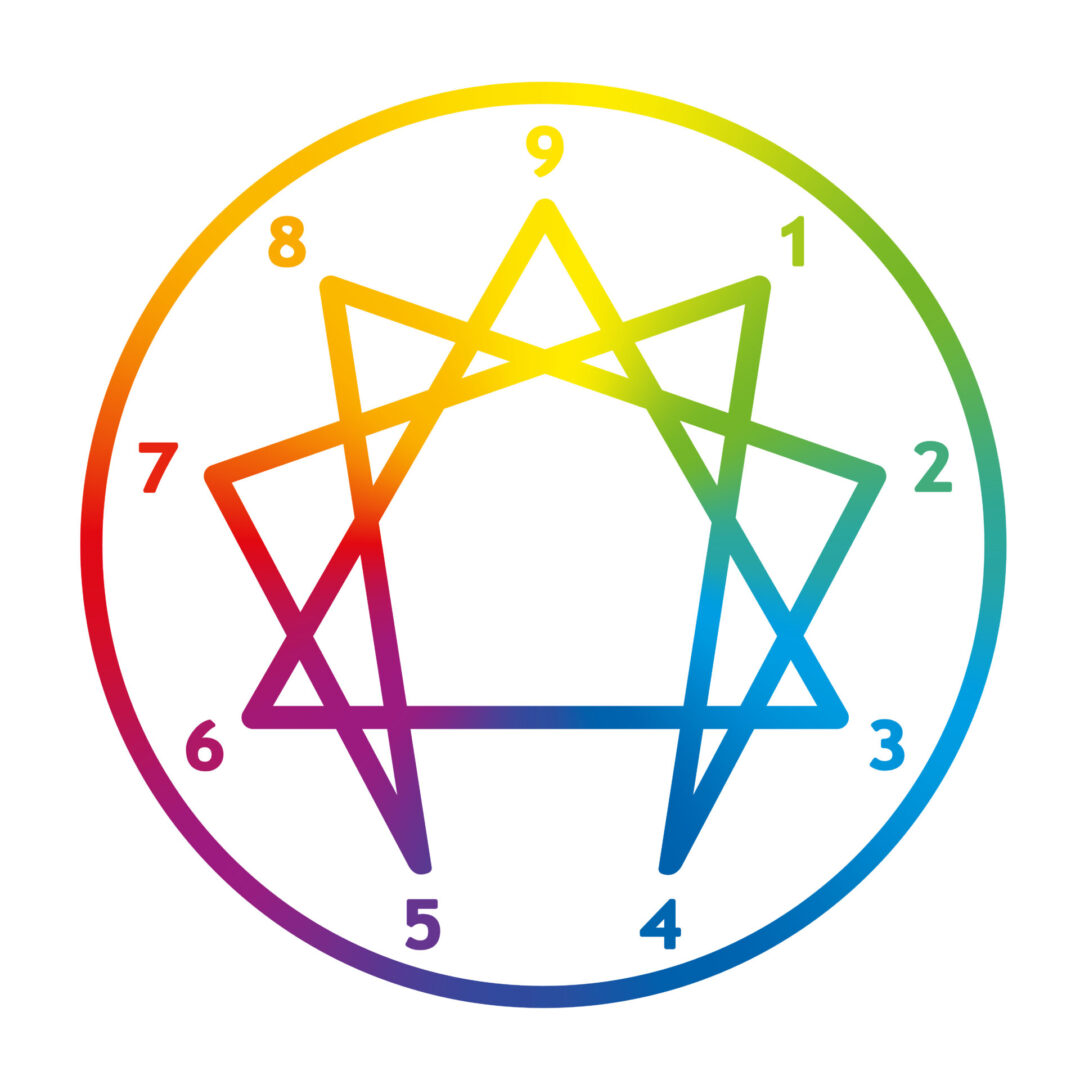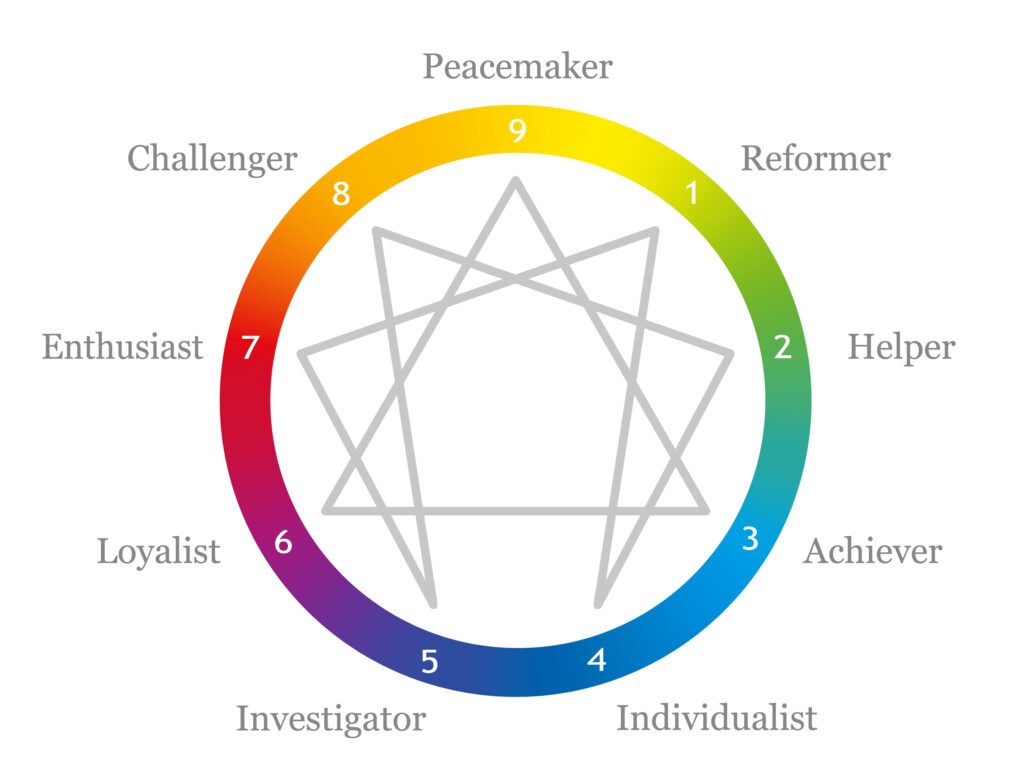The Enneagram Wisdom
The Enneagram of Personality Types - History
It is a modern synthesis of a number of ancient wisdom traditions, but the person who originally put the system together was Oscar Ichazo.
Ichazo was born in Bolivia and raised there and in Peru, but as a young man, moved to Buenos Aires, Argentina to learn from a school of inner work he had encountered. Thereafter, he journeyed in Asia gathering other knowledge before returning to South America to begin putting together a systematic approach to all he had learned.
After many years of developing his ideas, he created the Arica School as a vehicle for transmitting the knowledge that he had received, teaching in Chile in the late 1960's and early 70's, before moving to the United States where he resided until his passing in 2020. In 1970, When Ichazo was still living in South America, a group of Americans, including noted psychologists and writers Claudio Naranjo and John Lilly, went to Arica, Chile to study with Ichazo and to experience firsthand the methods for attaining self-realization that he had developed.
This group spent several weeks with Ichazo, learning the basics of his system and engaged in the practices he taught them. The Arica school, like any serious system of inner work, is a vast, interwoven, and sometimes complex body of teachings on psychology, cosmology, metaphysics, spirituality, and so forth, combined with various practices to bring about transformations of human consciousness.
Among the highlights for many of the participants was a system of teachings based on the ancient symbol of the Enneagram. The Enneagram symbol has roots in antiquity and can be traced back at least as far as the works of Pythagoras.
The symbol was reintroduced to the modern world by George Gurdjieff, the founder of a highly influential inner work school. Gurdjieff taught the symbol primarily through a series of sacred dances or movements, designed to give the participant a direct, felt sense of the meaning of symbol and the processes it represents. What Gurdjieff clearly did not teach was a system of types associated with the symbol. Gurdjieff did reveal to advanced students what he called their chief feature. The chief feature is the lynchpin of a person's ego structure—the basic characteristic that defines them.
For these and other reasons, many early Enneagram enthusiasts have mistakenly attributed the system of the nine types to Gurdjieff or to the Sufis because of Gurdjieff's use of some Sufi techniques. This has led to the widespread and erroneous belief that the Enneagram system has been handed down from the Sufis or from some other ancient school as an ongoing "oral tradition." While it is true that Ichazo drew on his knowledge of a number of such traditions, the actual combination of those traditions connected with the Enneagram symbol is purely his creation. Thus, the "Traditional Enneagram" only goes back to the 1960's when Ichazo was first teaching it, although the philosophy behind the Enneagram contains components from mystical Judaism, Christianity, Islam, Taoism, Buddhism, and ancient Greek philosophy (particularly Socrates, Plato, and the Neo-Platonists) — all traditions that stretch back into antiquity.
"We have to distinguish between a man as he is in essence, and as he is in ego or personality. In essence, every person is perfect, fearless, and in a loving unity with the entire cosmos; there is no conflict within the person between head, heart, and stomach or between the person and others. Then something happens: the ego begins to develop, karma accumulates, there is a transition from objectivity to subjectivity; man falls from essence into personality." Ichazo
Thus, Ichazo saw the Enneagram as a way of examining specifics about the structure of the human soul and particularly about the ways in which actual soul qualities ( Essence ) become distorted, or contracted into states of ego. In developing his Enneagram theories, he drew upon a recurrent theme in Western mystical and philosophical tradition — the idea of nine divine forms. This idea was discussed by Plato as the Divine Forms or Platonic Solids, qualities of existence that are essential, that cannot be broken down into constituent parts. This idea was further developed in the third century of our era by the Neo-Platonic philosophers, particularly Plotinus in his central work, The Enneads.
These ideas found their way from Greece and Asia Minor southward through Syria and eventually to Egypt. There, it was embraced by early Christian mystics known as the Desert Fathers who focused on studying the loss of the Divine Forms in ego consciousness. The particular ways in which these Divine forms became distorted came to be known as the Seven Deadly Sins: anger, pride, envy, avarice, gluttony, lust, and sloth. How the original nine forms, in the course of their travels from Greece to Egypt over the course of a century, became reduced to seven deadly sins remains a mystery.
Another key influence Ichazo employed in developing these ideas comes from mystical Judaism, and particularly from the teachings of the Kabbalah. Central to Kabbalah is a diagram called Tree of Life (Etz Hayim in Hebrew). The Tree of Life is a said to be a map showing the particular patterns and laws by which God created the manifest universe. The diagram is composed of 10 spheres (Sefirot) connected by 22 paths in particular ways. Most significantly, Ichazo must have been aware of the Kabbalistic teaching that all human souls are "sparks" that arise out of these spheres or emanations from the Kabbalistic Tree. (The first sphere, Keter, is reserved for the Messiah, leaving nine other spheres for the rest of us.) In the traditional teachings of the Kabbalah, for instance, each of the great patriarchs of the Bible were said to be embodiments of the different spheres of the Tree.
This teaching suggests that there are different kinds of souls—different emanations or facets of the Divine Unity.
Ichazo's brilliant work was in discovering how these Divine Forms and their corresponding distortions connected with the Enneagram symbol and with the three Centers of human intelligence, Thinking, Feeling, and Instinct. He called the higher, essential qualities of the human mind the Holy Ideas, in accordance with western mystical tradition. Each Holy Idea also has a corresponding Virtue. The Virtues are essential qualities of the heart experienced by human beings when they are abiding in Essence. As a person loses awareness and presence, falling away from Essence into the trance of the personality, the loss of awareness of the Holy Idea becomes a person's Ego-fixation, and the loss of contact with the Virtue causes the person's characteristic Passion. While everyone has the capacity to embody all of the Holy Ideas and Virtues, one pair of them is central to the soul's identity, so the loss if it is felt most acutely, and the person's ego is most preoccupied with recreating it, although in a futile, self-defeating way.
Your Basic Personality Type
From one point of view, the Enneagram can be seen as a set of nine distinct personality types, with each number on the Enneagram denoting one type. It is common to find a little of yourself in all nine of the types, although one of them should stand out as being closest to yourself. This is your basic personality type.
Everyone emerges from childhood with one of the nine types dominating their personality, with inborn temperament and other pre-natal factors being the main determinants of our type.
Subsequently, this inborn orientation largely determines the ways in which we learn to adapt to our early childhood environment.
In any case, by the time children are four or five years old, their consciousness has developed sufficiently to have a separate sense of self. Although their identity is still very fluid, at this age children begin to establish themselves and find ways of fitting into the world on their own.
Thus, the overall orientation of our personality reflects the totality of all childhood factors (including genetics) that influenced its development.
Identifying Your Basic Personality Type
Type One is principled, purposeful, self-controlled, and perfectionistic.
Type Two is generous, demonstrative, people-pleasing, and possessive.
Type Three is adaptable, excelling, driven, and image-conscious.
Type Four is expressive, dramatic, self-absorbed, and temperamental.
Type Five is perceptive, innovative, secretive, and isolated.
Type Six is engaging, responsible, anxious, and suspicious.
Type Seven is spontaneous, versatile, acquisitive, and scattered.
Type Eight is self-confident, decisive, willful, and confrontational.
Type Nine is receptive, reassuring, complacent, and resigned.
My Work - Hypnosis & The Enneagram
I have developed an approach that supports the betterment of your type - addressing and transmuting your type hardships, setbacks and obstacles.
Every personality type has positive qualities and many things that can be improved - I will help you to contemplate your personality type flaws, we'll go through your struggles and limiting beliefs. Eventually, we'll focus on the qualities you want to embrace and develop, instilling the best attributes of your personality.
The procedure starts with a meditation, applying techniques of Hypnosis, creating a safe space of loving and healing energies, where we'll address any aspect of your personality type that causes you distress. Eventually, we'll replace the limiting beliefs associated with your personality type with a list of positive beliefs customized to your type - creating new receptors, so you can create/live a positive, healthy, joyous and prosperous life.
First step...
Buy the service (link below). After you purchase it, we'll exchange emails and arrange your test (questionnaire).
You are encouraged to take the questionnaire offered by Riso-Hudson Enneagram Type Indicator - it will be approximately 45 minutes.
As you soon as you are done with it, both of us will receive a report about your personality type (a detailed pdf, approx. 25 pages). The report is going to help you to have a vast understanding of your personality type.
Second step...
Once we have the results, we'll set a date for your treatment (1 hour session).


Questionnaire, Report & Treatment
1 HOUR $180 USD
STANDARD PROCEDURE DURING THE FIRST SESSION
During your first session, we are to focus directly on what it is causing you to be distressful, uncomfortable, concerned about your life state. You are granted the treatment you are ready to receive at that very moment, that may include a guidance, or an instantaneous blessing. A treatment may give you a deep understanding about the core of your situation. It allows you to have the clarity and the relief needed to carry on with your life. At times, you feel encouraged to continue with additional sessions, so you learn how to sustain a high-vibrational life state, by developing virtues.
SESSION(S) IN PERSON OR REMOTELY (TELEPHONE/ZOOM)
There are some offers available:
Birthday Month, id. photo inquired (a single session or packages 10%OFF);
- Super Monday (135$ every 1st Monday of the month);
Coupons for a single session or for a package 10%OFF, granted if you live in a developing country of: South America; East Europe; Asia and Africa. Or, if you’re a Kama’aina, Hawai’i.
Read the Disclosure of Services, Disclaimer, Terms & Conditions and Code of Ethics notes prior to scheduling an appointment.
Unless the policies are accepted you may purchase any service.
By making a payment, you acknowledge you have read and agree to the policies.
Once the payment is done, you will be contacted to confirm details of your appointment(s).
Love & Gratitude,
Kealoha Cristiano Okalani

